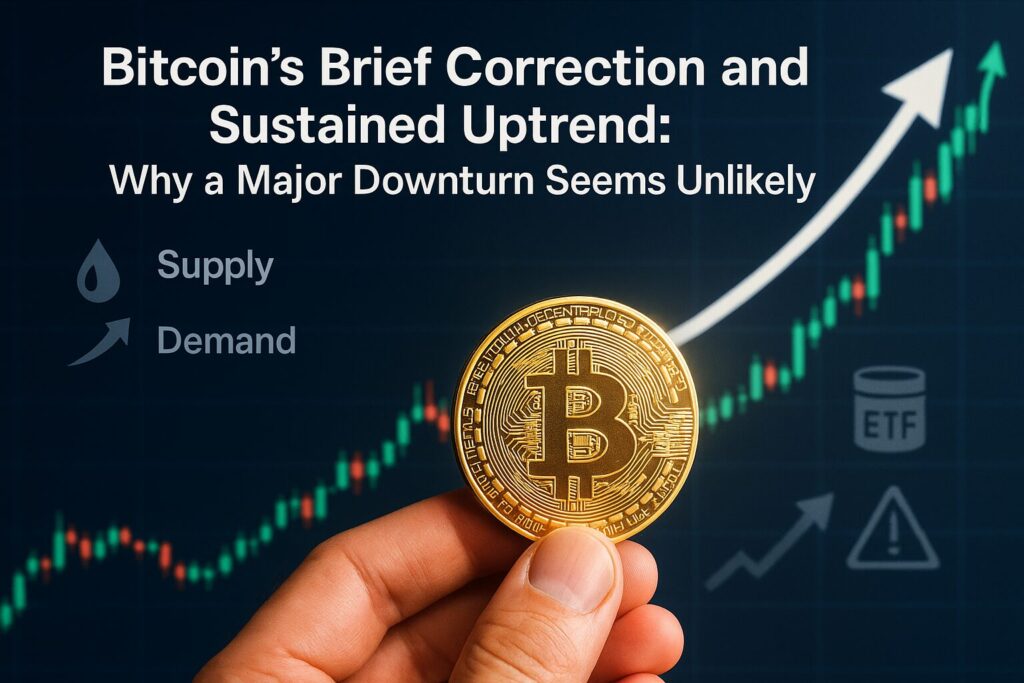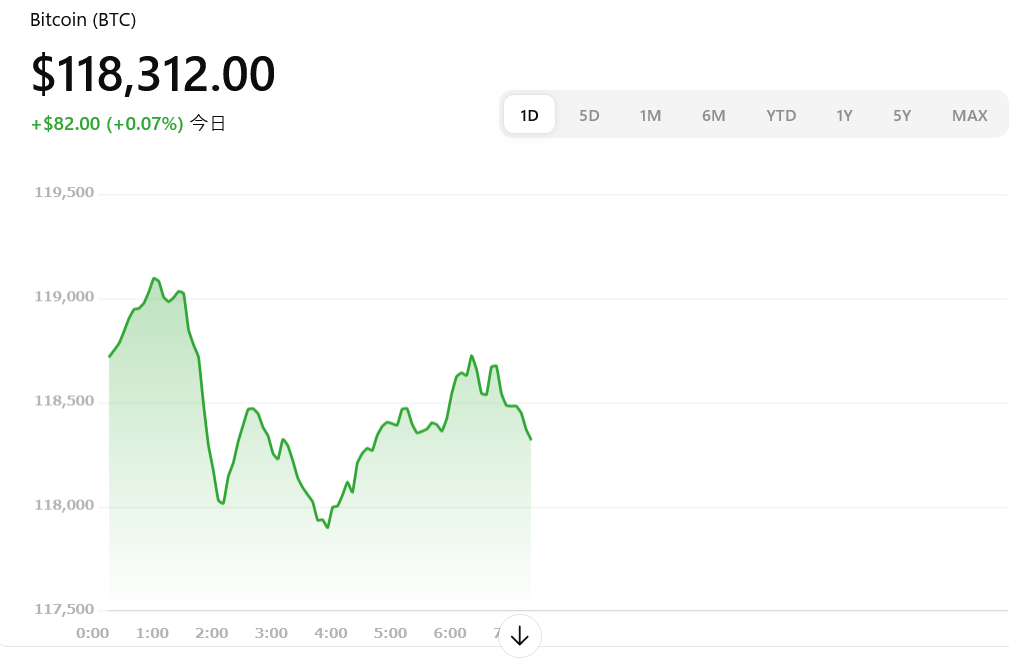
Key Takeaways:
- Bitcoin’s fundamentals remain robust, with supply declining faster than demand rises.
- Exchange and OTC reserves are at multi-year lows, underpinning price support.
- Recent all‑time highs of $122,884 were driven by aggressive buying, not fleeting speculation.
- U.S. spot Bitcoin ETFs have absorbed more supply than miners produce, amplifying demand.
- Two macro risks—tighter-than-expected tariffs and delayed Fed cuts—could trigger temporary pullbacks.
- Seasonal patterns usually cool in Q3, but this cycle defies tradition, suggesting renewed strength by year‑end.
Strong Fundamentals Support Bitcoin
Fundamental Drivers
Bitcoin’s on‑chain dynamics paint a bullish picture. As demand surges, the supply available on exchanges and over‑the‑counter (OTC) desks has plummeted to historic lows. According to 21Shares research strategist Matt Menna, this imbalance makes a prolonged downtrend unlikely. He explains, “Against a backdrop of rapidly falling supply, it’s hard to see a sustained bearish phase” .
Institutional flows further bolster fundamentals. U.S. spot Bitcoin ETFs have already absorbed multiple times the new BTC issuance from miners in 2025 alone, excluding additional off‑radar corporate treasury buys. This relentless demand contrasts sharply with the shrinking supply, creating a powerful price-support mechanism.
Exchange Supply at Historic Lows
Supply-Side Squeeze
Data from exchanges and OTC venues show Bitcoin reserves at decade lows. Fewer coins for sale force buyers to compete, lifting prices. This supply shock is visible in the charts below:

- Exchange Reserves: Down over 30% year‑to‑date, near the 2018 lows.
- OTC Desk Holdings: At record lows as large buyers—hedge funds, corporates—hoard BTC.
Such extreme supply reductions rarely coincide with deep corrections, especially when paired with rising demand.
Record Highs and Market Momentum
New All‑Time Highs
On July 14, Bitcoin soared to a new all‑time high of $122,884, smashing the previous record of $111,970 set on July 9—a mere five days earlier. This rapid succession of highs underscores the strength of the bullish sentiment .
Despite the typical summer slowdown—when traders take vacations and volumes dip—Bitcoin has bucked seasonal norms. Traditionally, Q3 (July–September) has delivered an average return of just 0.55%, with a median of –0.20%. Yet, in this cycle, Bitcoin’s volatility has remained robust, suggesting that renewed momentum may carry into autumn.
ETF Demand Outpaces Mining
Institutional Inflows
Spot Bitcoin ETFs listed in the U.S. have accumulated an estimated $40 billion in net inflows year‑to‑date, dwarfing the roughly $18 billion worth of BTC mined in the same period. BlackRock’s iShares Bitcoin Trust leads the charge, outpacing competitors by over 4×, while Grayscale’s newly launched Mini Trust has already gathered $422 million, despite higher anticipated fees.
This influx compounds the supply deficit: when ETFs continually purchase more BTC than miners release, secondary markets tighten, elevating the price floor and reducing volatility on the downside.
Macro Risks to Watch
Potential Headwinds
While the overall outlook is bullish, Menna cautions investors to monitor two key macro catalysts that could spark a pullback:
- Tariff Shock: If proposed U.S. tariffs on imports—particularly from China—are more stringent than markets anticipate, risk assets, including Bitcoin, could suffer mass repricing as global growth fears intensify.
- Delayed Fed Cuts: Should Federal Reserve Chair Powell signal a later-than-expected start to rate cuts, liquidity conditions may tighten, prompting investors to reassess exposure to higher‑beta assets like crypto.
Nevertheless, even if small corrections of 10–15% occur, the entrenched demand and low supply suggest such dips will be shallow and short‑lived.
Seasonality Defied: Summer Strength
Breaking Q3 Traditions
Historically, Q3 is Bitcoin’s weakest quarter, with average returns hovering around +0.55% and occasional steep drawdowns (e.g., –39.5% in Q3 2014). Yet this summer, Bitcoin not only sustained gains but also reached new highs during what is normally the lull.
Market participants typically reduce activity in July and August, but the current cycle’s dynamics—persistent ETF purchases, corporate accumulation, and a supply squeeze—have counteracted seasonal headwinds. As liquidity returns in autumn, analysts anticipate the next leg up for BTC.
Conclusion
Bitcoin’s recent price action reflects more than speculative fervor; it emerges from solid fundamental underpinnings. With exchange supply at multi‑year lows, ETF inflows dwarfing miner issuance, and corporate treasuries quietly accumulating, the risk of a major downturn seems minimal. Though macroeconomic shocks—tighter tariffs or delayed Fed rate cuts—could trigger temporary pullbacks, they would likely be shallow.
As we move into the back half of 2025, look for Bitcoin to consolidate above $100 000 and potentially revisit new record highs once autumn liquidity revives. For investors hunting the next source of yield or practical blockchain applications, Bitcoin’s structural resilience offers both opportunity and relative safety.

